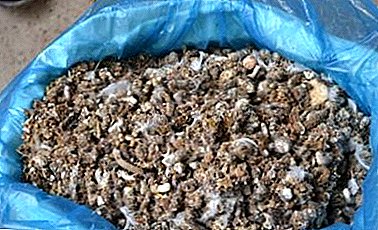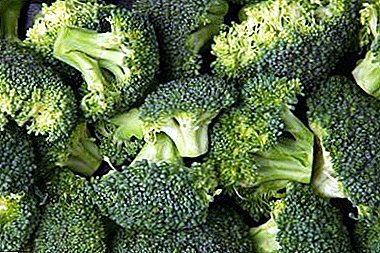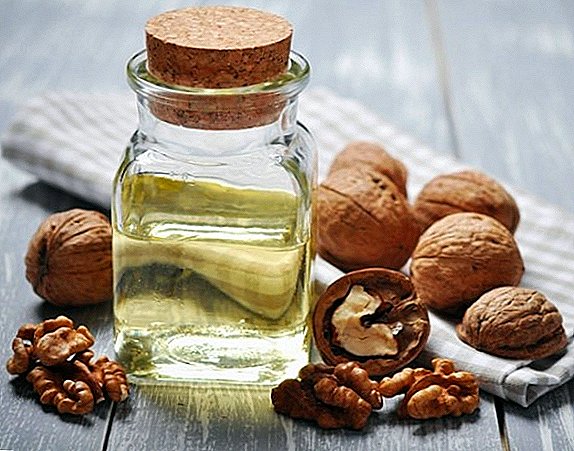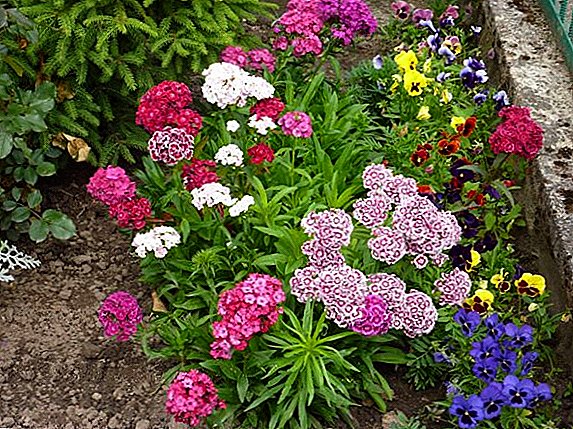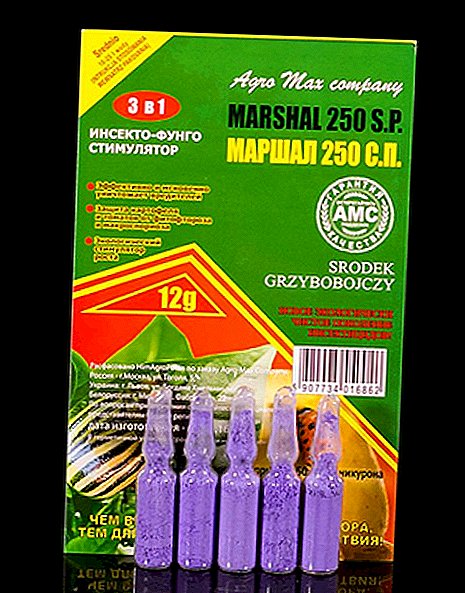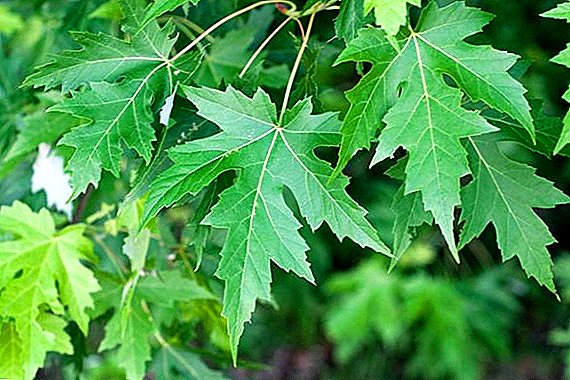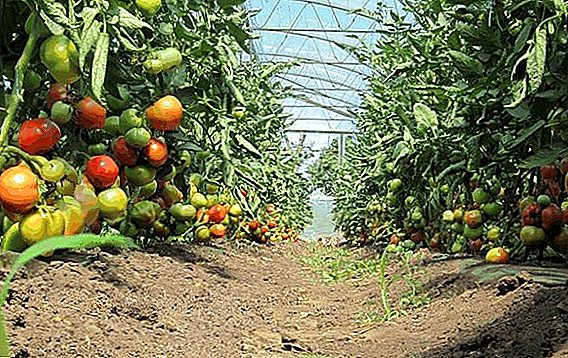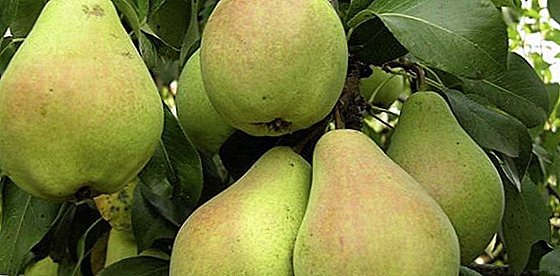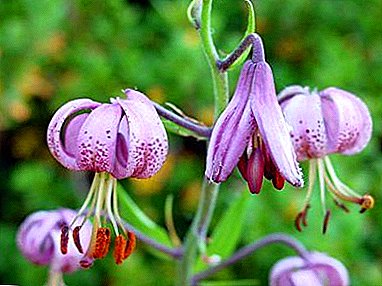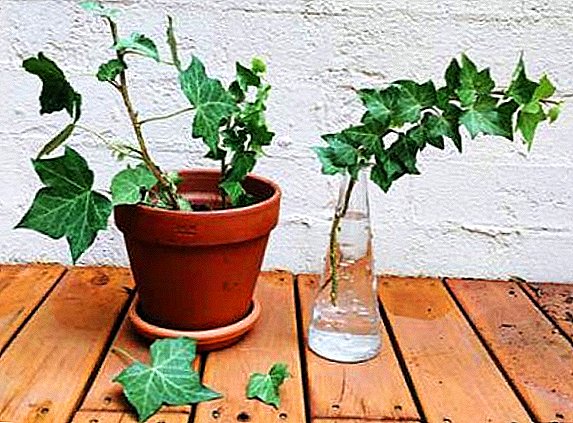 Everybody is familiar with ivy, since this plant can be seen on decorative hedges in gardens, or in the wild on the side of the road, in partial shade. Today we will learn more about what ivy is, how to multiply it, and whether it needs special conditions. Those who decide to breed ivy should be prepared for some difficulties.
Everybody is familiar with ivy, since this plant can be seen on decorative hedges in gardens, or in the wild on the side of the road, in partial shade. Today we will learn more about what ivy is, how to multiply it, and whether it needs special conditions. Those who decide to breed ivy should be prepared for some difficulties.
Ivy (vilitsa)
Ivy is a genus of plants that belongs to the Araliaceae family. The genus includes 16 species, which are divided into many varieties.
Ivy, regardless of the type or variety, have a creeping stem, and all are shrubs. Their shoots are divided into two types: flowering and non-flowering. On flowering shoots leaf plates are painted in light green or light green color, have an ovate or oblong shape. On non-blooming leaves are dark and angular-lobed.
The fruit is a small berry that is colored black or yellowish.  There is a plant in regions with a humid climate.
There is a plant in regions with a humid climate.
Did you know? Ivy absorbs from the air such dangerous compounds for humans as formaldehydes and benzenes. Because of this, the plant can be planted not only for decoration, but also to improve the composition of the air.
The plant can multiply by seeds, but this method is not used in horticulture, and the seeds go exclusively for animal feed. This is because the seeds, as is the case with many other cultures, do not preserve the quality of the parent plant. For decorative purposes, the plant is propagated only in two ways: layering and cuttings.
Growing ivy from cuttings
Cutting is a fairly simple way to get planting material. Many types of ivy grow so fast that the plant will not even notice the loss of several shoots.
Video: ivy propagation by cuttings
Deadlines for Procurement
Preparation should be carried out in late spring or throughout the summer. It should be remembered that only a woody escape is used as a cutting. Young watery green shoots are better not to touch, as they take root very slowly, and under adverse conditions (cold snap or high humidity) begin to rot.
Room ivy is one of the most common indoor plants, and Canary and garden ivy are especially popular.
It is better not to conduct grafting in the autumn, since the plant to prepare for wintering, respectively, does not increase additional shoots, but stores nutrients in the above-ground and underground parts. If you cut a few twigs, then a small bush may have problems, because of what it will not survive the winter. 
How to prepare and root cuttings
For reproduction, annual shoots are used, on which there are small adventitious roots, or rudiments are visible. Next, measure 10-14 cm, then make an oblique cut. On the handle should be healthy leaves, as well as at least one formed node.
Video: rooting ivy cuttings with perlite Then all the lower leaves (near the cut) are removed, after which the lower part of the shoot is dipped into the root system growth stimulator. After that, the stalk is planted in a mixture of sand and earth in a 1: 1 ratio.
Important! We deepen the planting material only by a third. The ground should not be leaves, otherwise they will rot.
If the weather is fine, then pots / boxes with ivy can be brought outside. In the opposite case, it is better to leave containers with cuttings in a greenhouse or a well-lit room.
After 1.5 months, you can safely plant the plant in a permanent place.
Landing rules
When choosing a permanent place for a young plant, you should take into account that ivy loves shade or partial shade, as well as sufficiently nutritious soil.
Video: how to plant ivy If the good soil is already taken, then when planting, add a small amount of humus or compost. After that, it will be enough to maintain humidity.
Be sure to pay attention to the acidity of the substrate. Ivy will die if it is planted on acidic soils. The reaction must be neutral or alkaline.
Find out what is important soil acidity for plants, how to determine the acidity of the soil at the site, how to deoxidize the soil, as well as how to improve soil fertility.
Better place for ivy - a wet area under the crown of a large tree, which is adjacent to the fence. In such a place ivy will not only grow well, but also decorate a fence.
In large open areas, the plant will be useless, and it will be necessary to care for it as a demanding crop, since in the absence of shade, moisture will evaporate much more quickly from the substrate.
How to propagate ivy layering
Reproduction by layering is the easiest way to get a few new plants, because at the initial stage you will not have to cut something from the mother bush.
First you need to forge near the bush a few not deep grooves in the ground. Next, select the formed lower shoots, place them in the grooves, then prikopat. Liberally moisten the soil, and also several times make a liquid solution of ammonium nitrate.  Propagation by lay should be at the end of spring or at the beginning of summer, so that the rooted mustache during the growing season have time to form a rhizome. Separation from the parent bush is produced in early autumn or next spring.
Propagation by lay should be at the end of spring or at the beginning of summer, so that the rooted mustache during the growing season have time to form a rhizome. Separation from the parent bush is produced in early autumn or next spring.
Did you know? Ivy extract is commonly used in traditional medicine. On its basis, cough and asthma mixtures are produced, which can be used to treat small children, as well as pregnant women.
As you can see, this method is not dangerous for the mother plant, but it is impossible to use it to produce a large number of young ivy.
Features care for plantings
In order for the plant to feel well and have a beautiful appearance, it is necessary to adhere to some rules in the care.
Mulching and soil care
Laying mulch is necessary for two reasons: to preserve moisture in the soil, as well as to protect against winter frost.
Also, the mulch will feed the soil, so there is no need for additional fertilization. Peat, humus or compost is excellent as a mulching material.
We recommend you read why you need soil mulching.
It is not recommended to use dry grass, straw or sawdust, as various parasites start up in such a mulch, and during prolonged rains, sawdust will cause the root system to rot, as well as block access to oxygen.
Mulch is laid several times so that a large layer does not “hide” the foliage, which can rot. At the end of the summer, the layer thickness should be increased so that the mulch performs the function of a thermos in winter.  Peat as a mulch material If for some reason you have refused to lay the mulch layer, then you definitely need to weed regularly, especially if there is heavy clay soil on the site, as there is a problem with oxygen supply.
Peat as a mulch material If for some reason you have refused to lay the mulch layer, then you definitely need to weed regularly, especially if there is heavy clay soil on the site, as there is a problem with oxygen supply.
Important! Mulch does not fit if ivy is grown as a ground cover plant. In this case, you should cover the bush with snow.
Proper watering plants
Ivy loves moisture, however, like any other plant, can suffer from rotting roots. For this reason, it is important to conduct proper watering.
You are required to prevent the soil from drying out, that is, watering when there is no precipitation, which reduces the soil moisture. Watering is carried out only during the growing season. It is not necessary to flood the bush in the fall, as this will lead to overcooling of the root system.
Ivy pruning
One way or another, a part of the above-ground shoots will freeze out during the winter, after which you will need to conduct a competent pruning.
Proper pruning involves removing dry, damaged and frozen shoots at the right time.
In early spring, this procedure is not carried out, since such manipulations will significantly worsen the condition of ivy. To carry out sanitary and formative pruning should be only in late spring or early summer. In this case, the plant will not suffer.  If not only annual twigs are frozen, but also a shoot with a large diameter, then the cutting sites must be treated with garden pitch to prevent the appearance of diseases.
If not only annual twigs are frozen, but also a shoot with a large diameter, then the cutting sites must be treated with garden pitch to prevent the appearance of diseases.
How to deal with major diseases and pests of ivy
Ivy is prone to various lesions that can ruin its appearance or even ruin the plant. Therefore, it is important to know about them in advance in order to identify and eliminate in time:
- Spider mite. This insect loves to settle on both indoor and outdoor plants. A prerequisite for its occurrence is reduced air humidity. Mite does not tolerate high humidity. The insect feeds on ivy juices, forming a kind of cobweb on its leafy plates. A large colony can cause the dying off of small or large ivy shoots. Before using chemicals, you should sprinkle the above-ground parts to increase the overall humidity. Further various insecticides are applied: "Aktellik", "Fitoverm", "Neoron", "Apollo". All of these drugs help rid the plant of a tick of any kind.
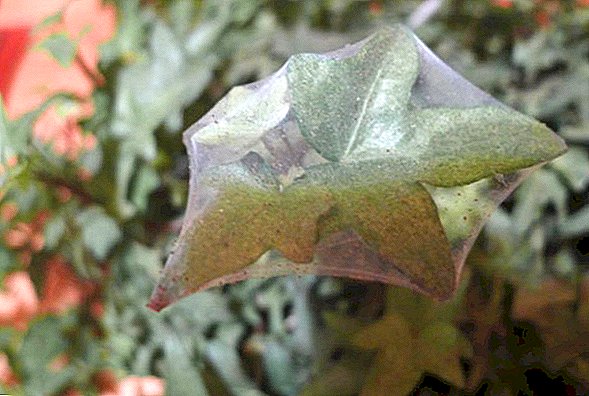
Read more about how to deal with spider mites.
- Aphid. Another sucking insect that feeds on the sap of almost all plants. No matter how harmless the pest may seem, it is always worth remembering that the aphid moves not only with the assistance of ants, but also on its own, since it has wings. In order to prevent the spread of infection in the garden, it is necessary to treat the bush with the following insecticides to choose from: "Karbofos", "Intavir", "Iskra", "Komandor".
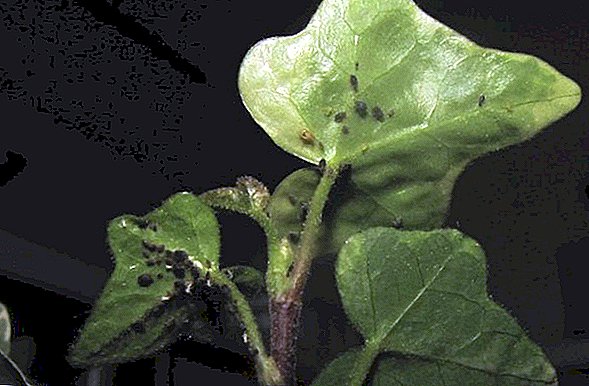
- Shchitovka. Unpleasant pests that are difficult to get rid of mechanically, and their larvae does not take chemistry, so in case of severe infection, ivy will have to be processed several times. Shchitovka are also sucking pests that cause growth inhibition, as well as decay of foliage. Practically the same insecticides are used for the fight: "Aktara", "Phosbecid", "Aktellik".

We should also talk about diseases. The fact is that ivy is used in medicine for a reason. The composition of the leaves and shoots include substances that destroy bacteria and fungi. It is for this reason that ivy is not affected by diseases, and the deterioration of the appearance is directly related to poor conditions or the activity of pests.
With proper care and the right choice of place, ivy can be a real decoration of your site. The main thing to remember is that it tends to grow, so you need to plant it aside from valuable crops or buildings.
Users of the network on the reproduction of ivy







